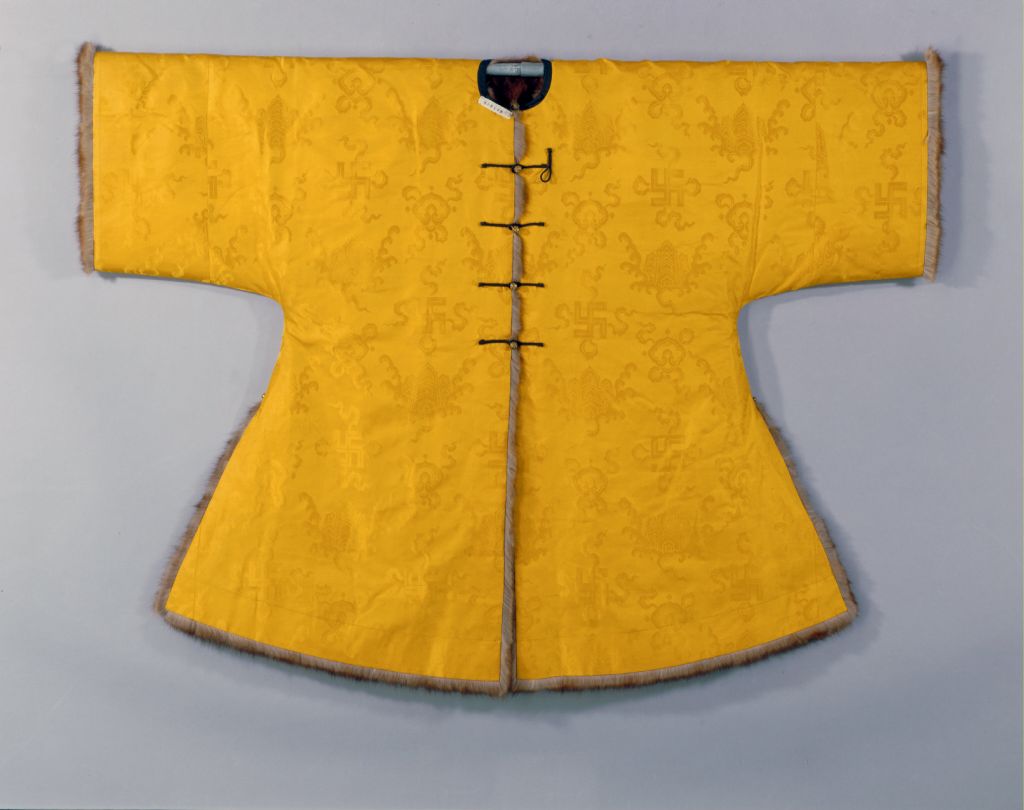[Ruan Gao’s Painting of Fairies in Langyuan]
The Painting of Fairies in Langyuan, painted by Ruan Gao in the Five Dynasties, is 42.7 cm in length and 177.2 cm in width
This picture is without the author’s signature. According to the records of the past dynasties and the postscript after the volume, it has been circulated and is the only work handed down by Ruan Gao. This painting has an inscription by Emperor Qianlong of the Qing Dynasty. This painting and the front and back of it are separated from the water by the collection of 22 seals, including 6 residual seals
“Langyuan” is the legendary residence of immortals, sometimes also referred to as the palace. This picture depicts Langyuan, a fairyland, where fairies live and play. The picture depicts the scene of a group of fairies relaxing among the green pines and bamboos. Three of them are in a prominent position. They sit together under the escort of the fairies, or hold the scroll to read, or unfold the scroll to stare, or play with the three strings. There are Luan Fairy, Dragon Fairy, Cloud Fairy, and the fairies walking slowly on the sea, echoing with the fairies on the ground
The female fairy in the painting has a delicate body, and the clothing lines are fine, round and soft, which is contrary to the plumpness of the maid in the Tang and Zhou Fang dynasties and the squareness of the clothing lines. The branches are mostly painted in crab claw shape, and the painting method is slightly like Li Cheng. The slope stone is marked with ink lines and dyed green. The water pattern is complex and vivid, which is reminiscent of the Tang Dynasty. Gao Shiqi of the Qing Dynasty said in his postscript: “Ruan Gao’s paintings of the five dynasties are rare in the world.” The Painting of Fairies in Langyuan “was once introduced into Xuanhe Imperial Mansion, and the ink is not as deep as that of Chen Juzhong and Su Han’s officials.”
The Song Dynasty’s Xuanhe Painting Manual, the Qing Dynasty’s Gao Shiqi’s Jiangcun Summer Relieving Record, the Jiangcun Calligraphy and Painting Catalogue, Bian Yongyu’s Collection of Ancient Hall Calligraphy and Painting, Wu Sheng’s Grand View Record, and the Neifu’s Shiqu Treasure Collection, First Edition and other books are recorded.
![图片[1]-Ruan Gao Langyuan Female Fairy Scroll-China Archive](https://chinaarchive.net/Five Dynasties and Ten Kingdoms/painting/s58ec884d5ba2e.jpg)
![[Qing Dynasty] British female painter—Elizabeth Keith, using woodblock prints to record China from the late Qing Dynasty to the early Republic of China—1915-China Archive](https://chinaarchive.net/wp-content/uploads/2022/11/image-191x300.png)




